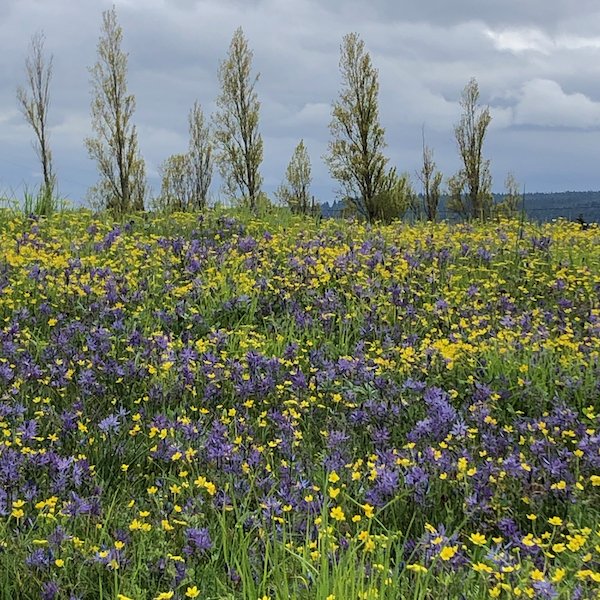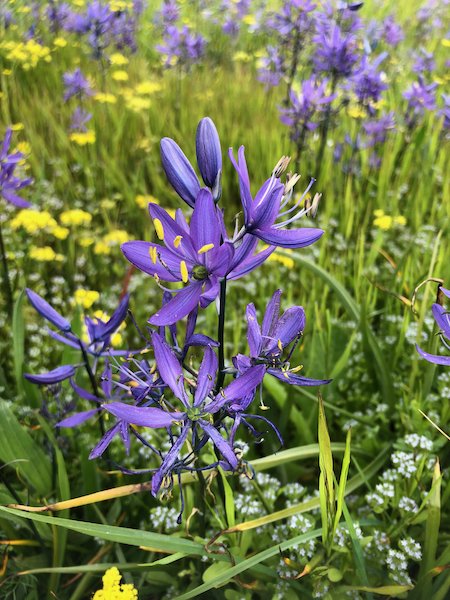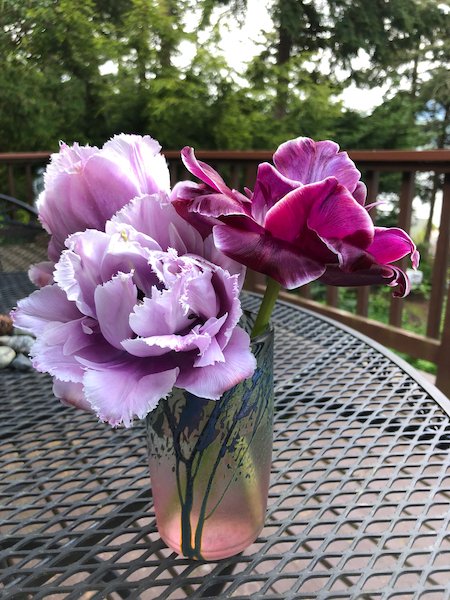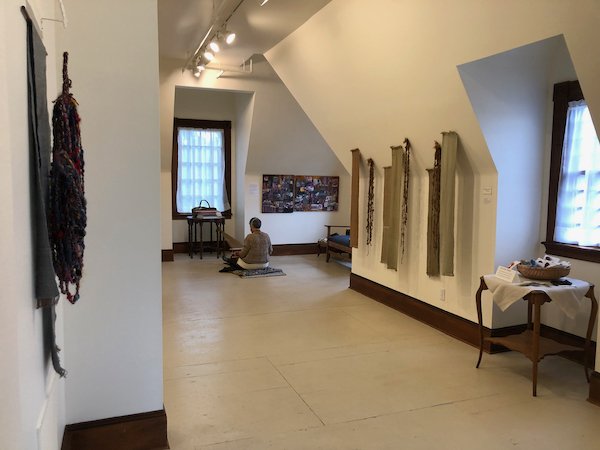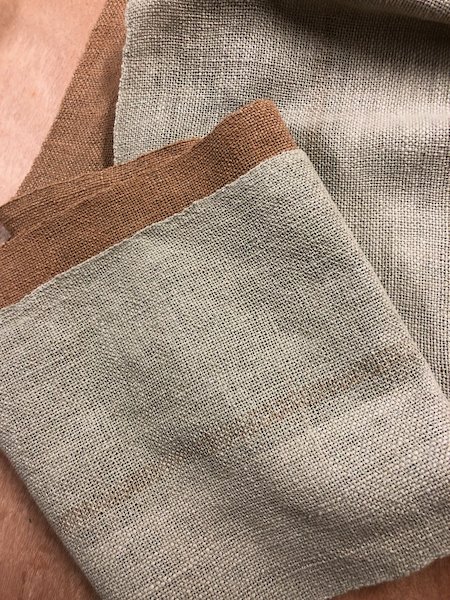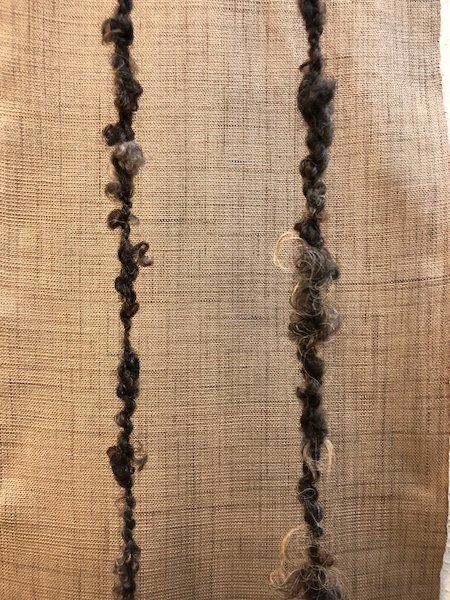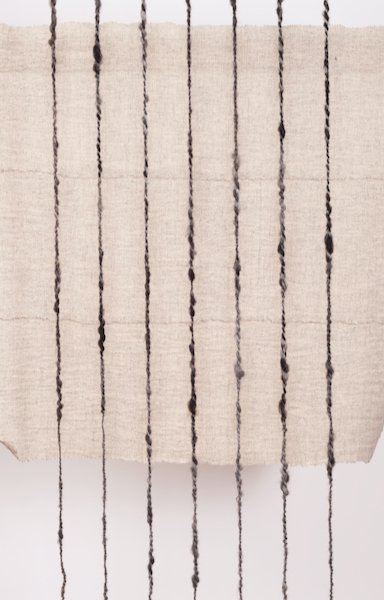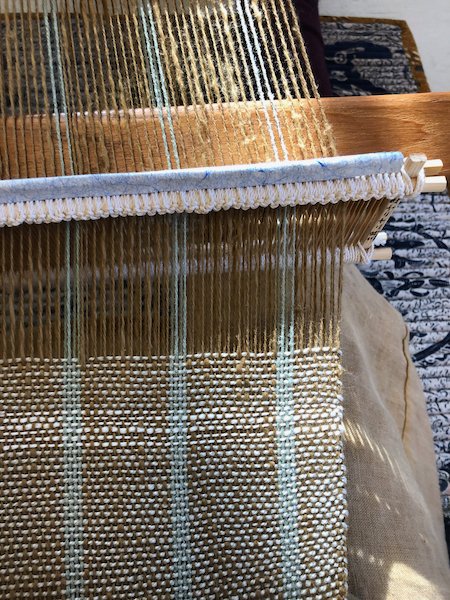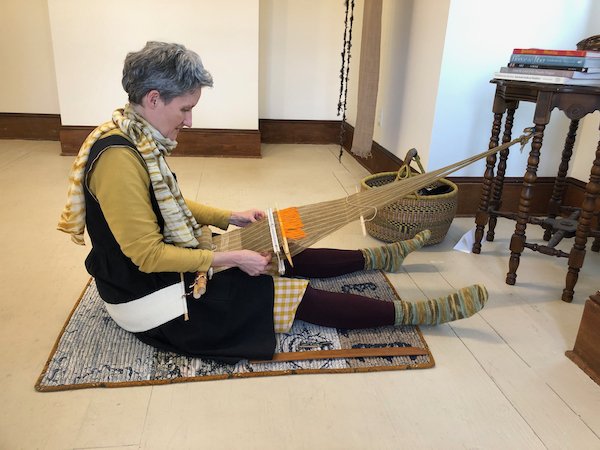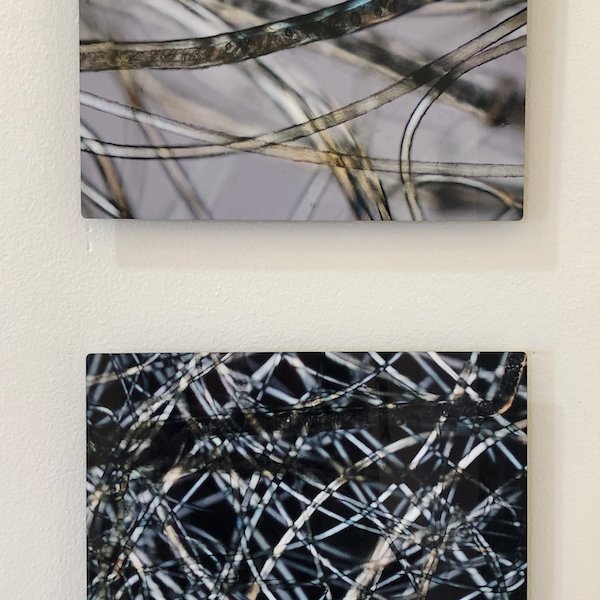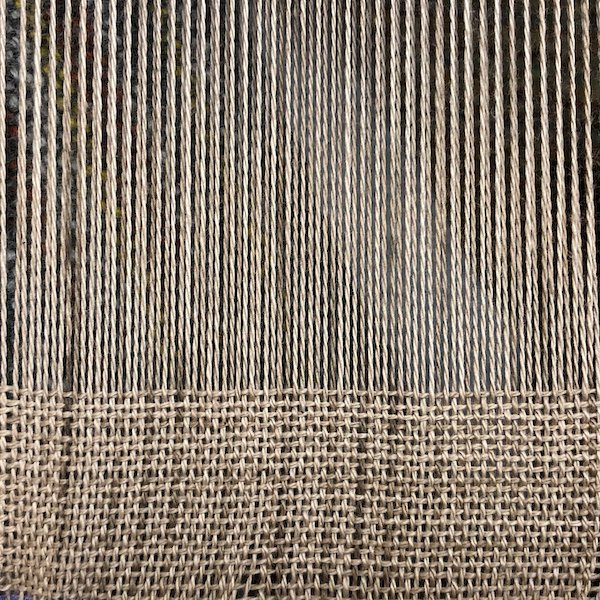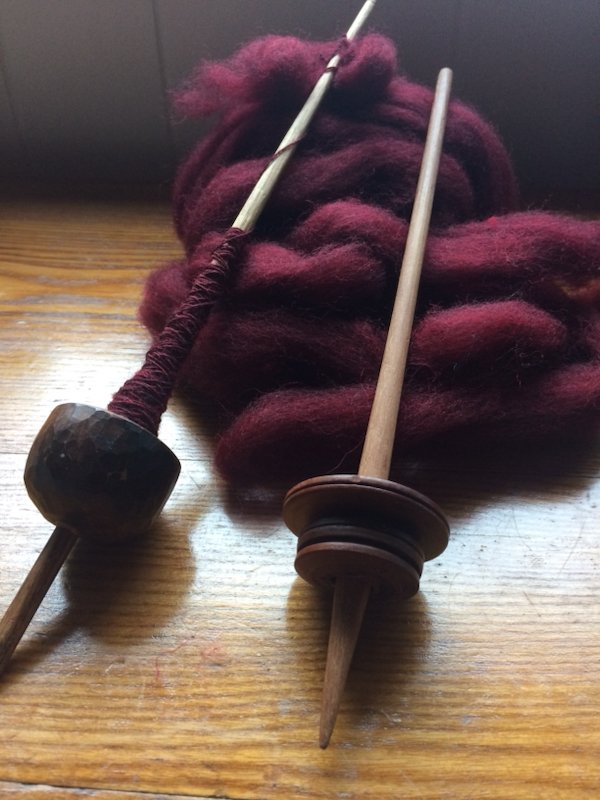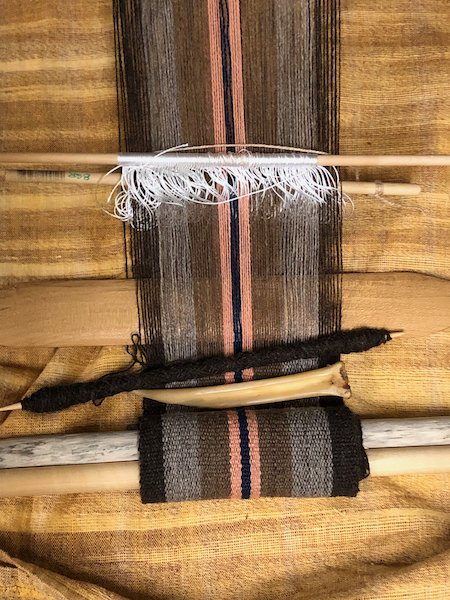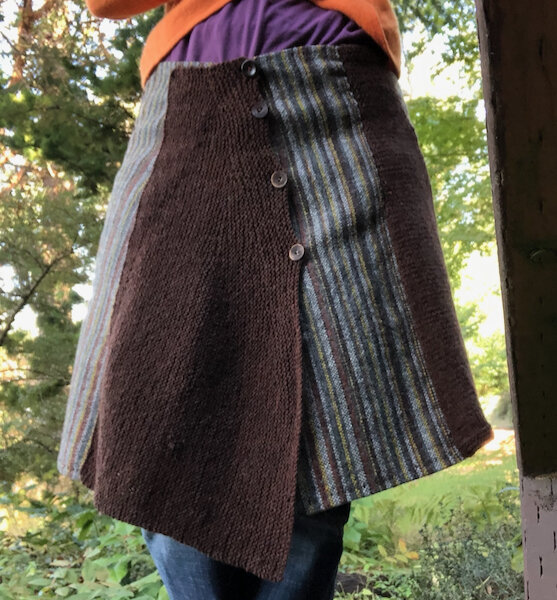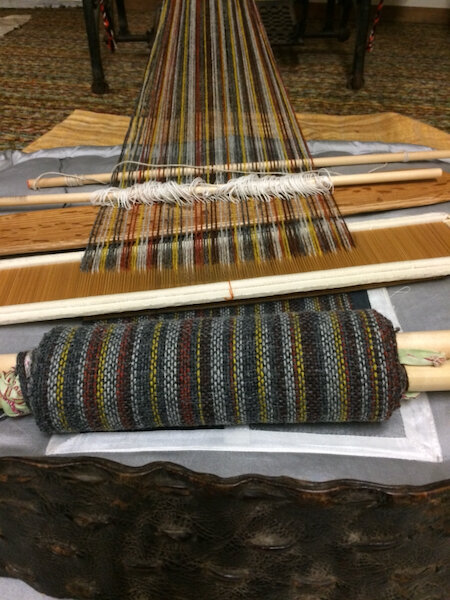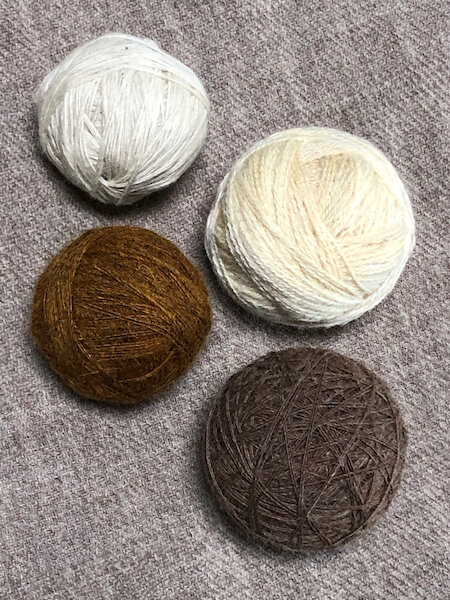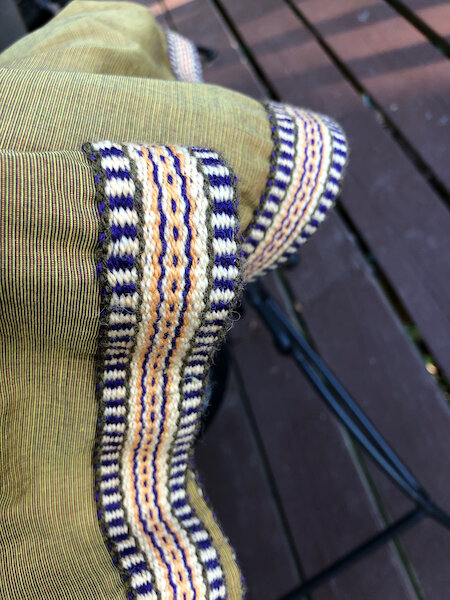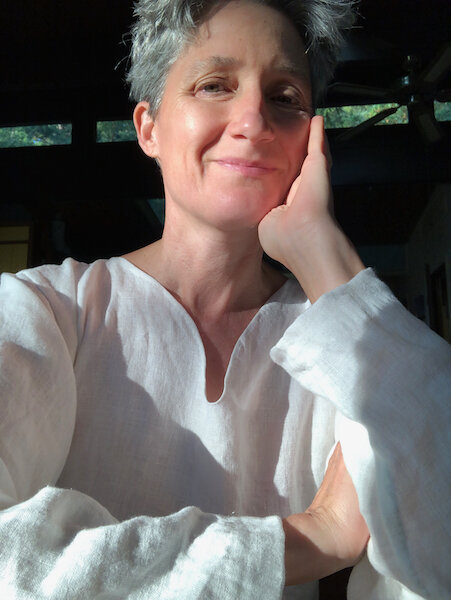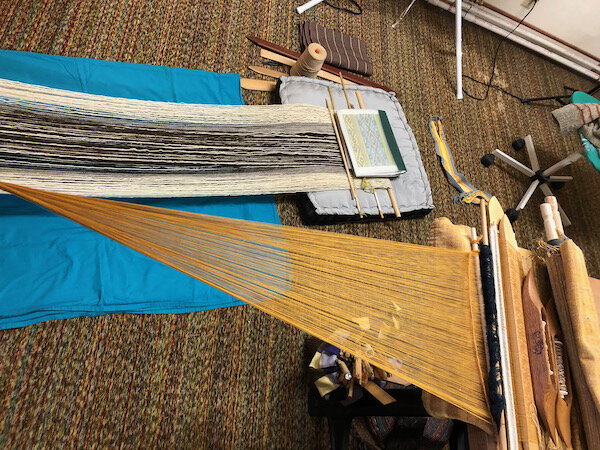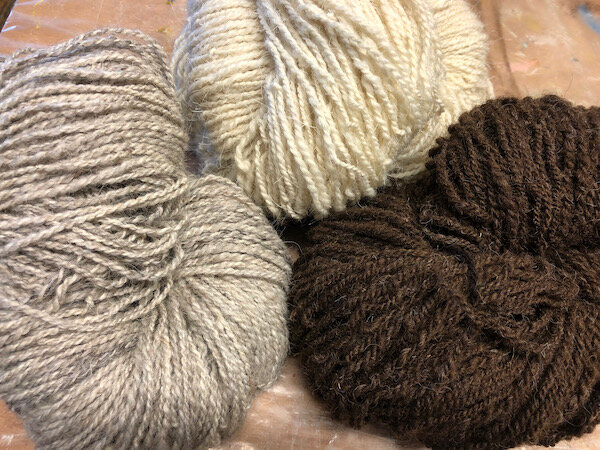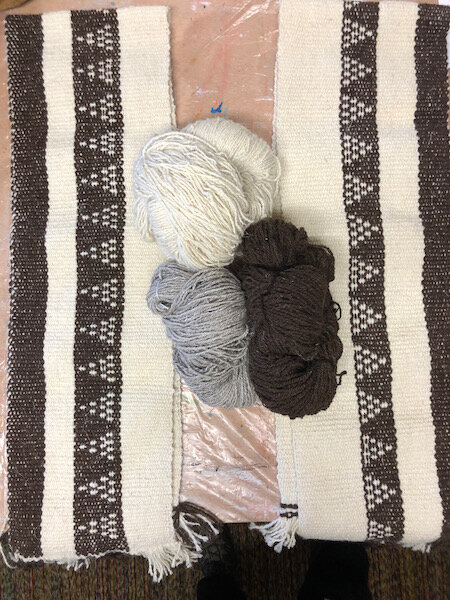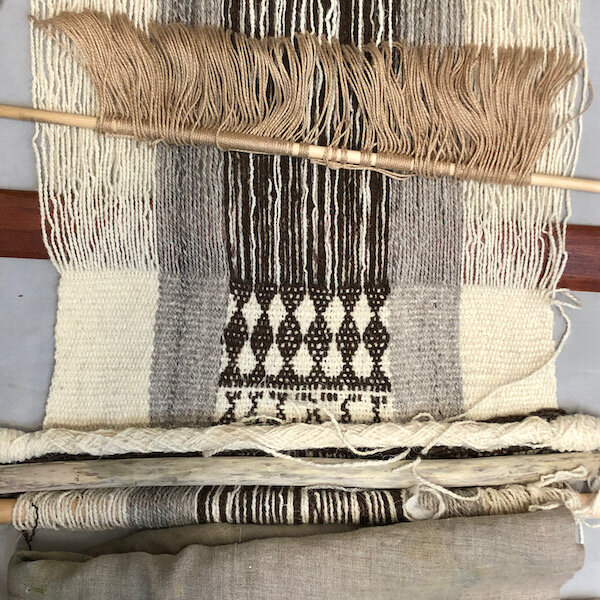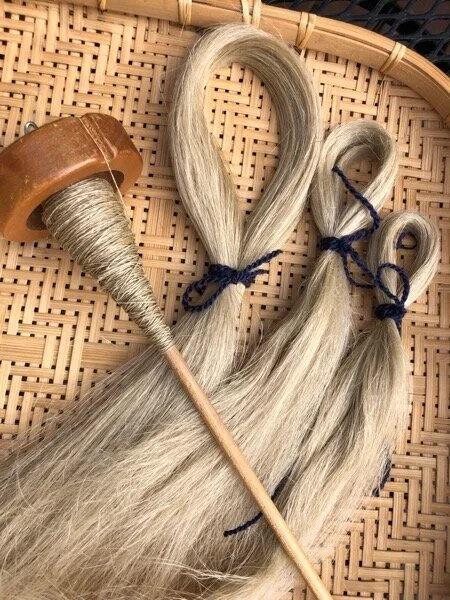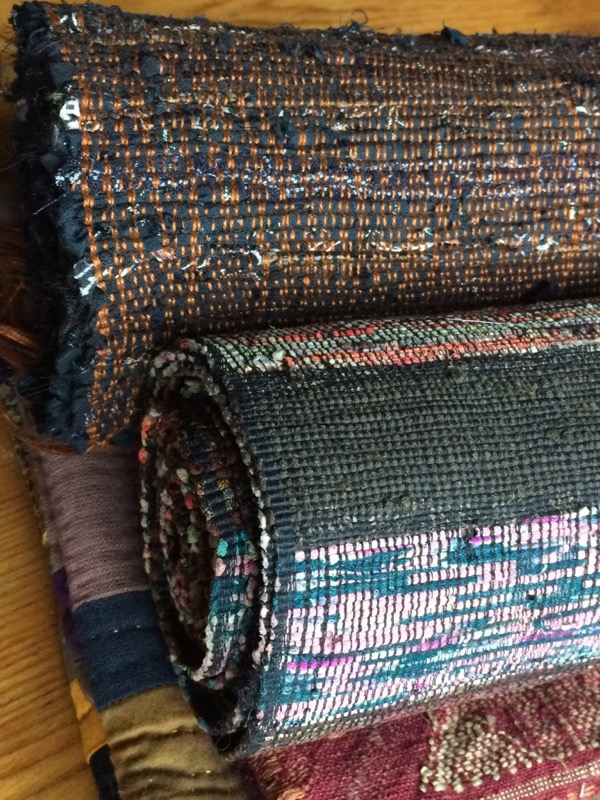Time goes by so fast, the photos I wanted to share are already two months old. But I can walk you back through some springtime blossoms that are long gone now - it fits with the theme of life being fleeting, change inherent, and so forth. That’s all we’ve got. An indigenous woman I admire recently posted that sometimes “summoning up the energy to be positive and educational and shit is just beyond me.” When you’re looking at how things have gone down in the past, leading to what’s happening now, it often feels that way to me, too. Case in point: I dug around for my pretty flower photos, knowing they might just be escapist prettiness, and behold the field of Camas above. Which is a single acre of restored native prairie, salvaged from the entrance to a golf course. It used to be most of the land between this hill and the qatáy lagoon, qatáy being the name of the S’Klallam village that was located in what is now Port Townsend. (The lagoon and prairie are spelled Kah Tai in promotional literature - notably when you look up the qatáy spelling, you see that the village was burned in 1871. Even how we spell things changes the history that people see.) I read somewhere that much of the Willamette Valley in Oregon was also covered in this type of prairie, prior to colonization. Anyway, this is the Camas, a flower with edible bulb that was a staple of life for the people - and as Robin Wall Kimmerer notes in some of her essays, the foraging of the people encouraged the growth of the flowers, in a cycle of reciprocal sustenance.
The other pretty flowers came to me from a local farm’s weekly share. It was such a cold, wet spring that the vegetables were late, but the tulips just kept blooming, and we got them four weeks in a row. I had never really gotten the infatuation with tulips, seeing them pop up all tall and bright, then drop their petals. But this year, I actually went to the Skagit Valley tulip festival, since my mom was visiting, and we walked through staggering fields of tulips in bloom and whoa. Then the little bouquets in my home from the farm share showed me how tulips can look like silk, how they have depth and impossible symmetry, and now I’m full of respect.
I also got to pick the colors - purple tulips getting wild as they open
Tulips almost dancing in their bunch of five.
I’m otherwise immersed in Alexis Pauline Gumbs, reading her book Undrowned: Black Feminist Lessons from Marine Mammals, kind of on repeat. It’s the kind of thing you read, and you need to read it slow so you can feel it, and sometimes you need to read parts out loud to yourself or to friends. And then you need to read it again, and go back and find that thing. So I’ve been living with it for months now - but I’m not actually ready to share any excerpts or reflections. I will say that her Stardust and Salt program has also been a part of my life, a stimulation to engage in daily creative practice. Which I was sort of doing, but started a whole new thing thanks to the beautiful words and thoughts and encouragement and love emanating from this awe-inspiring woman. Wow.
Wool warp and weft, above my lap of linen
I also keep weaving, some cloth that will be cloth, that I can use to sew a garment, is the idea. Same yarn, warp and weft (unusual for me), from the deep ancestral stash of my friend Ann. It is weaving up soooo nicely, and I’m eager to see how it snugs up with a good wet finish. But I have many yards to go yet - I made a long warp this time. And I keep getting called outside by birds and green and tree friends.
Also retro - trilliums were in bloom back in early May.
Really just making an effort to be here with some content that is wholesome, loving, full of curiosity and respect, and possibly encouraging to others. On that note, I’ve got a Hafiz poem for you. And one more thing I’ve been doing is watching Lizzo’s Watch Out for the Big Grrrls. It’s related to all of this, believe it or not. What the beautiful Big Girls are giving me is joyful resistance, an assertion of life and love that does not look like what we're typically offered as the ideal. They're blasting open our indoctrination with every episode of the show, to assert the beauty of real, messy, confused, hopeful, determined, struggling people. The things they say to me about bodies and movement and dance and love are very similar to the poem below, and thus it intertwines, and I’m thankful.
(Poem by Daniel Ladinsky, in the guise of rendering Hafiz into English, but after reading this article, I won’t call it Hafiz… nevertheless beautiful.)
Because of Our Wisdom
In many parts of this world water is
Scarce and precious.
People sometimes have to walk
A great distance
Then carry heavy jugs upon their
Heads.
Because of our wisdom, we will travel
Far for love.
All movement is a sign of
Thirst.
Most speaking really says,
“I am hungry to know you.”
Every desire of your body is holy;
Every desire of your body is
Holy.
Dear one,
Why wait until you are dying
To discover that divine
Truth?
